
Monitoring flood damage to the cultural heritage fund in the Moravian-Silesian Region
The flood has also affected the owners of monuments in the Moravian-Silesian Region. While monitoring the flood-related damages, individual area guarantors and specialists are mapping all affected locations. They are recording the current state and losses of the cultural heritage fund. They offer professional assistance to affected owners in the field to address their current situation.
"Based on current findings, we can confirm that a total of 143 cultural monuments have been damaged in the Moravian-Silesian Region, with a total gross estimate of direct damages exceeding 130 million CZK, and it is likely that this figure may significantly increase with a detailed survey of the affected sites," says Michal Zezula, director of the National Heritage Institute, regional expert workplace in Ostrava.
The monument fund of municipalities with extended authority (ORP) Krnov was most severely affected by the floods, followed by Opava, Bruntál, Bohumín, Nový Jičín, and Ostrava. Significant damages are also recorded in ORP Jablunkov and Hlučín. The damages primarily resulted from the flooding of buildings with water and mud; unfortunately, in the upper Opava basin, we also encounter destruction of masonry structures caused by water currents. The damages caused by uprooted and fallen trees due to saturated soil and strong winds are not negligible either. Among the damaged monuments are significant structures that have recently undergone or are undergoing restoration, such as the castles in Hošťálkovy, Kunín, Linhartovy, and Slezské Rudoltice. A falling branch damaged the roof of the orangery at Radun Castle, and uprooted trees are recorded in the castle parks in Hradec nad Moravicí, Kravaří, Studénka, Paskov, and others. Extensive damages have also occurred to sacral objects, especially in Krnov, where the Minorite monastery with the convent church has been heavily affected, or the Church of Our Lady in Brantice, where, among other things, part of the enclosing wall collapsed.
In dozens of cases, the floods have affected the properties of cities and municipalities as well as private owners of urban and village houses, most acutely again in the Krnov, Bruntál, and Opava regions. The damage to small monuments such as statues, crosses, and chapels cannot be overlooked either. An example of the impact of floods on this segment of the heritage fund is the statue of Saint John of Nepomuk in Brantice, which was swept away by the water current and was rescued by the owner from under a layer of mud, or the flooding of three chapels in Starý Bohumín. Many of the damaged objects were recently restored or renovated using various grant programs, and it is certain that their restoration will not be possible now without public support.
Monitoring was carried out by the regional expert workplace of the National Heritage Institute in Ostrava, initiated mostly by the staff of the heritage care department, that is, the regional guarantors and specialists, using data provided by some owners (e.g., the Diocese of Ostrava-Opava, etc.). A list of the currently assessed damages was submitted to the Department of Culture and Heritage Care of the Moravian-Silesian Region and will be useful for planning the restoration of the affected cultural and historical heritage.
In the Register of Heritage Conservation (ÚSKP) in the Heritage Catalog, there are 2005 cultural monuments (legal statuses) and 20 National Cultural Monuments (legal statuses) recorded in the Moravian-Silesian Region.
The National Heritage Institute, based on its statutory mandate, fulfills the tasks defined by Act No. 20/1987 Coll., on State Heritage Care. It ensures expert and methodological activities related to the care of immovable and movable cultural monuments, their complexes, heritage reserves, heritage zones, protective zones, and areas with archaeological findings. It provides free expert assistance to the owners of cultural monuments and affected municipalities when securing the care for cultural monuments. It offers consultations to the owners of cultural monuments and designers during the development of preliminary and project documentation for the restoration of immovable cultural monuments or buildings, structural changes, land modifications, the placement or removal of installations, demolition of buildings, modifications to trees, or maintenance work on immovable properties in heritage reserves, zones, and protective zones, and comments on all levels of documentation. It participates in methodological, coordinating, organizational, and evaluative activities during the preparation and implementation of grant programs by regional offices in the field of heritage care.
"Based on current findings, we can confirm that a total of 143 cultural monuments have been damaged in the Moravian-Silesian Region, with a total gross estimate of direct damages exceeding 130 million CZK, and it is likely that this figure may significantly increase with a detailed survey of the affected sites," says Michal Zezula, director of the National Heritage Institute, regional expert workplace in Ostrava.
The monument fund of municipalities with extended authority (ORP) Krnov was most severely affected by the floods, followed by Opava, Bruntál, Bohumín, Nový Jičín, and Ostrava. Significant damages are also recorded in ORP Jablunkov and Hlučín. The damages primarily resulted from the flooding of buildings with water and mud; unfortunately, in the upper Opava basin, we also encounter destruction of masonry structures caused by water currents. The damages caused by uprooted and fallen trees due to saturated soil and strong winds are not negligible either. Among the damaged monuments are significant structures that have recently undergone or are undergoing restoration, such as the castles in Hošťálkovy, Kunín, Linhartovy, and Slezské Rudoltice. A falling branch damaged the roof of the orangery at Radun Castle, and uprooted trees are recorded in the castle parks in Hradec nad Moravicí, Kravaří, Studénka, Paskov, and others. Extensive damages have also occurred to sacral objects, especially in Krnov, where the Minorite monastery with the convent church has been heavily affected, or the Church of Our Lady in Brantice, where, among other things, part of the enclosing wall collapsed.
In dozens of cases, the floods have affected the properties of cities and municipalities as well as private owners of urban and village houses, most acutely again in the Krnov, Bruntál, and Opava regions. The damage to small monuments such as statues, crosses, and chapels cannot be overlooked either. An example of the impact of floods on this segment of the heritage fund is the statue of Saint John of Nepomuk in Brantice, which was swept away by the water current and was rescued by the owner from under a layer of mud, or the flooding of three chapels in Starý Bohumín. Many of the damaged objects were recently restored or renovated using various grant programs, and it is certain that their restoration will not be possible now without public support.
Monitoring was carried out by the regional expert workplace of the National Heritage Institute in Ostrava, initiated mostly by the staff of the heritage care department, that is, the regional guarantors and specialists, using data provided by some owners (e.g., the Diocese of Ostrava-Opava, etc.). A list of the currently assessed damages was submitted to the Department of Culture and Heritage Care of the Moravian-Silesian Region and will be useful for planning the restoration of the affected cultural and historical heritage.
In the Register of Heritage Conservation (ÚSKP) in the Heritage Catalog, there are 2005 cultural monuments (legal statuses) and 20 National Cultural Monuments (legal statuses) recorded in the Moravian-Silesian Region.
The National Heritage Institute, based on its statutory mandate, fulfills the tasks defined by Act No. 20/1987 Coll., on State Heritage Care. It ensures expert and methodological activities related to the care of immovable and movable cultural monuments, their complexes, heritage reserves, heritage zones, protective zones, and areas with archaeological findings. It provides free expert assistance to the owners of cultural monuments and affected municipalities when securing the care for cultural monuments. It offers consultations to the owners of cultural monuments and designers during the development of preliminary and project documentation for the restoration of immovable cultural monuments or buildings, structural changes, land modifications, the placement or removal of installations, demolition of buildings, modifications to trees, or maintenance work on immovable properties in heritage reserves, zones, and protective zones, and comments on all levels of documentation. It participates in methodological, coordinating, organizational, and evaluative activities during the preparation and implementation of grant programs by regional offices in the field of heritage care.
The English translation is powered by AI tool. Switch to Czech to view the original text source.
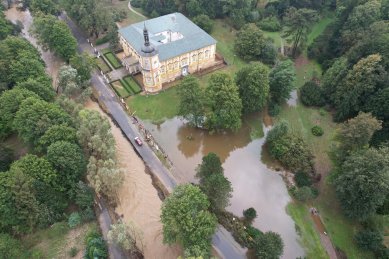
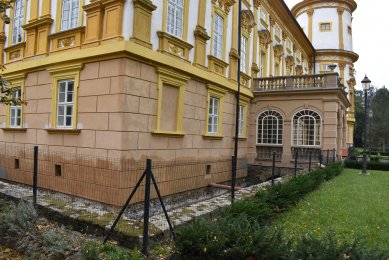
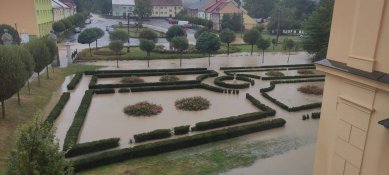
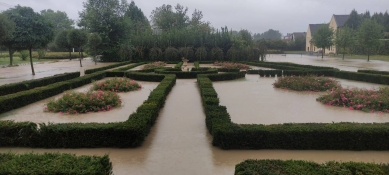
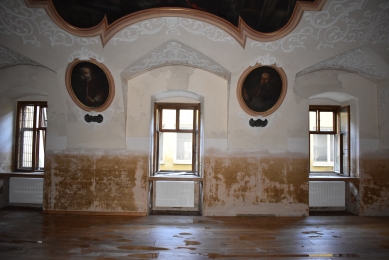
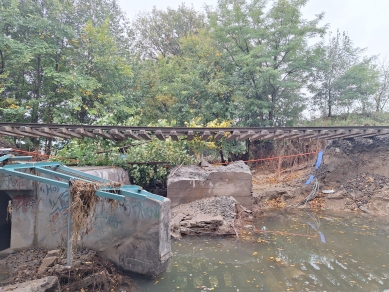
0 comments
add comment










